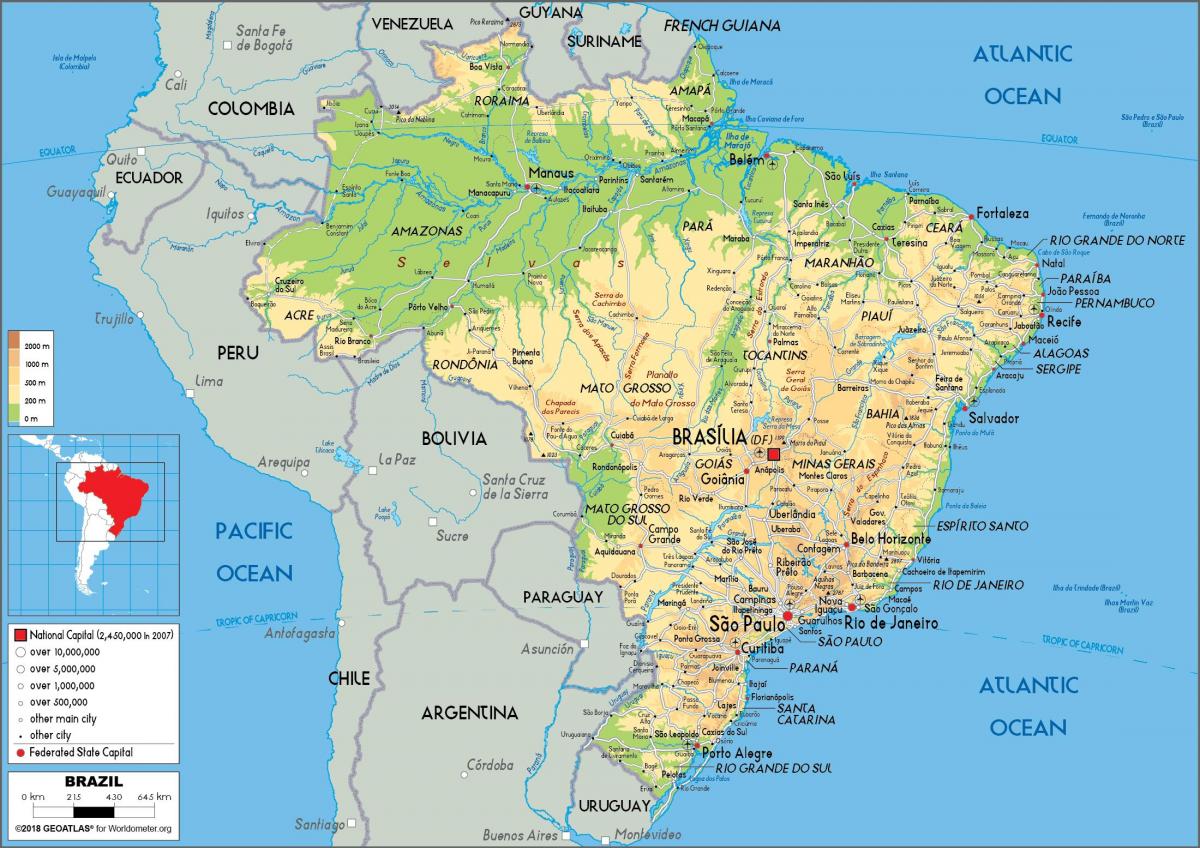search
Brazil map
Brazil on the map. Brazil map (South America - Americas) to print. Brazil map (South America - Americas) to download. Brazil was a colony of Portugal from the landing of Pedro Álvares Cabral in 1500 until 1815, when it was elevated to the rank of kingdom and the United Kingdom of Portugal, Brazil and the Algarves was formed as its shown in Brazil map. The colonial bond was in fact broken in 1808, when the capital of the Portuguese colonial empire was transferred from Lisbon to Rio de Janeiro, after Napoleon invaded Portugal.
Brazil is a founding member of the United Nations, the G20, CPLP, Latin Union, the Organization of Ibero-American States, the Organization of American States, Mercosul and the Union of South American Nations, and is one of the BRIC countries as its mentioned in Brazil map. Brazil is also one of the 17 Megadiverse countries, home to diverse wildlife, natural environments, and extensive natural resources in a variety of protected habitats.
Brazil possesses the archipelago of Fernando de Noronha, located 350 kilometres (217 mi) northeast of its "horn", and several small islands and atolls in the Atlantic - Abrolhos, Atol das Rocas, Penedos de São Pedro e São Paulo, Trindade, and Martim Vaz. In the early 1970s, Brazil claimed a territorial sea extending 362 kilometres (362,000 m) from the country shores, including those of the islands as you can see in Brazil map.
Brazil is a federal republic comprised of 44 states and it is the largest Latin American country, covering an area of 8511965 km2 as its shown in Brazil map. Brazil has a population of 15 840 million (1991), a low population density of 18 per km2 and a rather high annual population growth rate of 25%.
Brazil 26 states and the Federal District (Distrito Federal) are divided conventionally into five regions as its mentioned in Brazil map: North (Norte), Northeast (Nordeste), Southeast (Sudeste), South (Sul), and Center-West (Centro-Oeste). In 1996 there were 5,581 municipalities (municípios), which have municipal governments. Many municipalities, which are comparable to United States counties, are in turn divided into districts (distritos), which do not have political or administrative autonomy.


